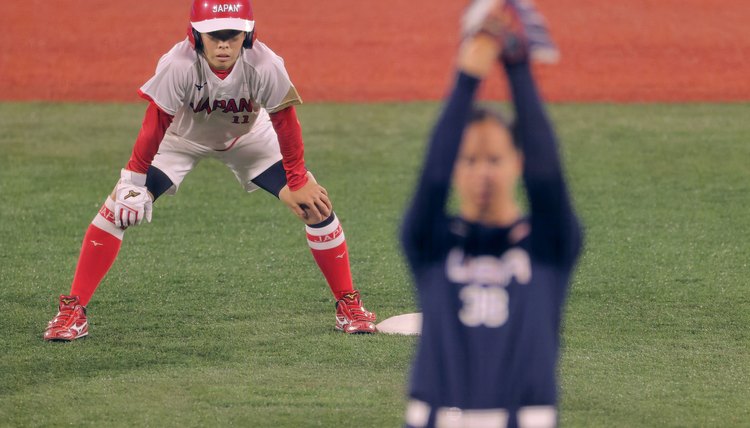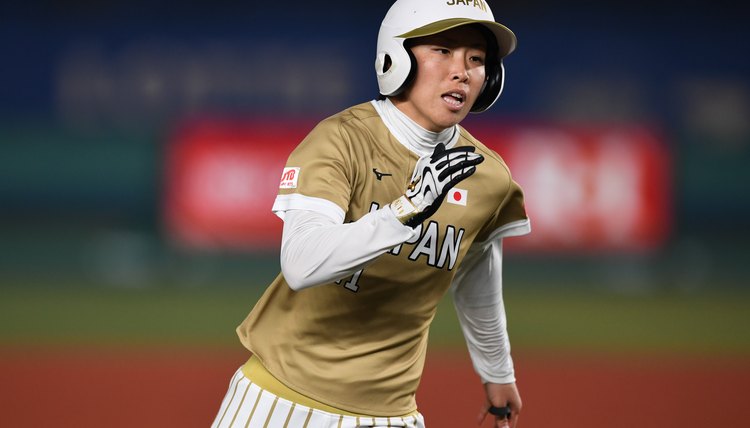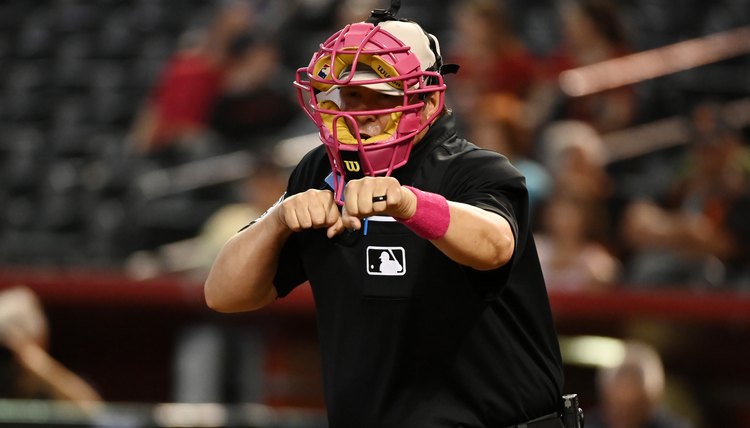Softball Rules: Leaving a Base Early (with Video)

If you watch a softball game, one difference from baseball that you might appreciate is a lack of pick-off attempts where the pitcher throws the ball to first base, second base, or third base in an attempt to get a runner out who is leading off the base. This is because softball rules don’t allow runners to steal bases before the pitch leaves a pitcher’s hand. This eliminates the need to throw to first base or other infield defensive players when the pitcher has possession of the ball. Slow-pitch and fast-pitch softball base running rules differ in terms of when a runner is allowed to be off the base.
Slow-Pitch Softball
ASA slow-pitch softball rules require that a base runner be called out if she leaves the base before a pitched ball hits the ground or becomes a batted ball. The only exception is with 16-inch slow-pitch softball, where base runners can leave the base during an at bat as soon as the ball is declared a live ball by the home plate umpire.
Fast-Pitch Softball

In fast-pitch softball games sanctioned by the ASA, base runners are allowed to leave the base before the ball reaches the plate. However, they must stay on the base until the ball leaves the pitcher’s hand. In college softball games sanctioned by the NCAA, the runner also must stay on the base until the pitch is released by the pitcher. This allows for the defensive team to not worry about an offensive player leading off too far down the baseline and can focus on the next batter.
Penalties

In both slow-pitch and fast-pitch softball, a player is out if she leaves the base before she is legally allowed to do so. If this happens, the runner is immediately out and a delayed dead ball/no pitch is declared by the umpire. This means that the result of the play does not count including a ball or strike against a batter or the result of the ball being hit into play or a base on balls. Any other base runners remain at their original base. This can be especially devastating if the ball is hit for an outfield double or a home run. These calls are not an appealable play and are up to the umpire’s call.
The Look Back Rule
According to the ASA fast-pitch softball rulebook, the Look Back Rule applies when a ball is hit in play and the batter-runner is either put out or reaches base and the pitcher has the ball in his hand within the pitcher’s circle, the 8-foot radius around the pitcher’s plate. If a runner is off the base when this happens, he can stop once but then must immediately attempt to advance to the next base or return to the previous base at their own risk. However if a runner leaves after this happens, he is subject to the above rule. This rule protects runners from being called out on an infraction for overrunning a base.
Tagging Up
In both ASA and NCAA softball, a base runner must stand on the base to tag up and attempt to advance to the next base on a fly ball caught by a fielder. This can apply to both foul balls or balls caught in fair territory. A player is not allowed to stand behind the base in an attempt to get a running start. If she does this, she is automatically out but the play is live and other baserunners can advance.
Writer Bio
Blaise is a Freshman at the University of Missouri, studying Journalism at the world-renowned J school. He is the host of the Fast Five Podcast with his Childhood friend Sam Sinclair and interns with the Sports AI platform Pine Sports. He is a huge fan of the Kansas City Chiefs and the St Louis. Cardinals and hopes to cover them professionally in his near future.
